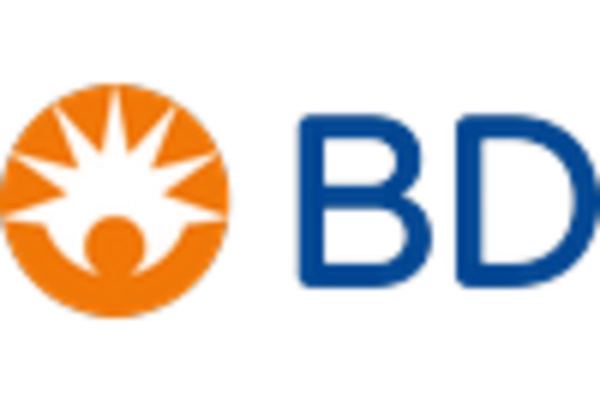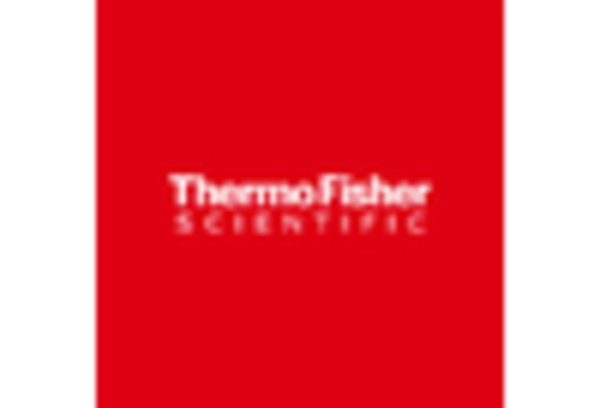Focus on Safety and Compliance
Safety and compliance are paramount in the Automated Blood Processing Equipment Market, as regulatory bodies impose stringent guidelines to ensure the quality of blood products. Automated systems are designed to adhere to these regulations, minimizing the risk of contamination and ensuring traceability throughout the blood processing chain. The increasing emphasis on safety standards is likely to propel the adoption of automated solutions, as healthcare providers seek to mitigate risks associated with manual processing. This focus on compliance not only enhances patient safety but also fosters trust in blood transfusion practices, thereby driving market growth.
Growing Demand for Blood Components
The demand for blood components, such as platelets and plasma, is on the rise, significantly impacting the Automated Blood Processing Equipment Market. As medical practices evolve, there is a growing recognition of the therapeutic benefits of specific blood components, leading to increased utilization in various treatments. This trend is expected to drive the market for automated blood processing equipment, as facilities require advanced technology to efficiently separate and process these components. Market analysts project that the demand for blood components will grow by approximately 6% annually, further emphasizing the need for automation in blood processing.
Rising Incidence of Blood Disorders
The prevalence of blood disorders, including anemia, hemophilia, and thalassemia, is contributing to the growth of the Automated Blood Processing Equipment Market. As the number of patients requiring blood transfusions and component therapies increases, healthcare facilities are compelled to adopt automated solutions to meet this demand efficiently. According to recent statistics, the incidence of blood disorders is expected to rise by 5% annually, necessitating enhanced blood processing capabilities. This trend underscores the importance of automation in ensuring timely and safe blood supply, thereby driving the market for automated blood processing equipment.
Technological Advancements in Automation
The Automated Blood Processing Equipment Market is experiencing a surge in technological advancements that enhance efficiency and accuracy in blood processing. Innovations such as artificial intelligence and machine learning are being integrated into automated systems, allowing for real-time data analysis and improved decision-making. These advancements not only streamline operations but also reduce human error, which is critical in blood processing. The market is projected to grow at a compound annual growth rate of approximately 8% over the next five years, driven by these technological improvements. As hospitals and blood banks increasingly adopt automated solutions, the demand for sophisticated equipment is likely to rise, further propelling the market forward.
Increased Investment in Healthcare Infrastructure
Investment in healthcare infrastructure is a critical driver for the Automated Blood Processing Equipment Market. Governments and private entities are increasingly allocating funds to enhance healthcare facilities, particularly in developing regions. This investment often includes the procurement of advanced medical equipment, including automated blood processing systems. As healthcare systems expand and modernize, the demand for efficient and reliable blood processing solutions is likely to increase. This trend suggests a robust growth trajectory for the market, as enhanced infrastructure supports the integration of automated technologies in blood banks and hospitals.


















Leave a Comment